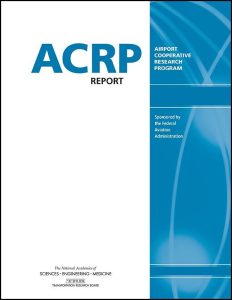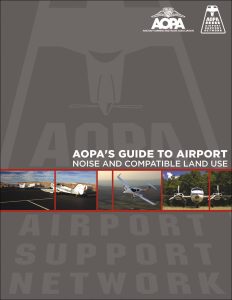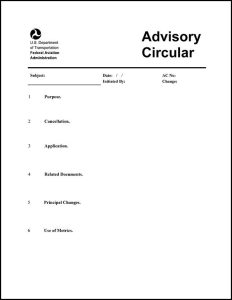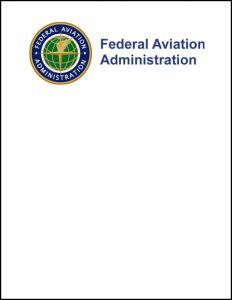To narrow the library of airside resources, use the filter boxes or airport map below or search box above.
Click an item below to expand.
Resources Matching Your Search
2009
ACRP Legal Research Digest 5: Responsibility for Implementation and Enforcement of Airport Land-Use Zoning Restrictions explores federal, state, regional, and local laws and regulations pertaining to aviation land use and zoning. Federal government agencies, states, counties, cities, port authorities, regional governmental authorities, and special taxing districts—all, to some degree, share responsibility with respect to airport-related land. This digest seeks to respond to the need for a comprehensive legal resource of applicable statutory and case law affecting the creation and enforcement of airport use restrictions.
2010
ACRP Report 27, Volume 1, presents a comprehensive account of issues associated with land uses around airports. The report is a comprehensive resource to both airports and local jurisdictions near airports. Volume 1 provides suggestions to help protect airports from incompatible land uses that impair current and future airport and aircraft operations and safety.
2010
ACRP Report 27, Volume 2, presents a comprehensive account of issues associated with land uses around airports. The report is a comprehensive resource for both airports and local jurisdictions near airports. It details 15 case studies that target a wide range of airports and land use issues. The case study sites include large commercial service, military, and general aviation airports and are geographically diverse. The report also offers states and local governments examples and a common basis for establishing zoning that protects public interest and investment in airports.
2019
ACRP Report 16, second edition, is designed to help airport practitioners, owners, operators, managers, and policymakers of small airports, who may have varying degrees of experience and backgrounds, to fulfill their responsibilities in such areas as financial management, oversight of contracts and leases, safety and security, noise impacts, community relations, compliance with federal and state obligations, facility maintenance, and capital improvements. The first edition has been edited and reformatted for currency, relevance, and usability and updated with additional information and new subject areas (e.g., unmanned aircraft systems, geographic information systems, digital notices to airmen, social media, and federal and state obligations). Also, hyperlinks to many of the documents and resources mentioned in this report, such as ACRP publications, industry sources, and sample checklists, have been collected into ACRP WebResource 6: Resources for Managing Small Airports.
2006
This booklet is intended as a guide in the understanding of the issues, rules, procedures, and policies applicable to airport noise and compatible land use planning.
2011
This document is designed to help communities and airports work cooperatively to plan for and establish compatible land use around airports and work toward mitigating existing incompatible land use. The goal of this guidebook is to protect communities and airports from incompatible land use that could negatively affect the safe operation of airports and pose hazardous consequences to the public.
2020
TRB hosted a webinar that discussed water resources on and near airports. These locations provide challenges as they attract wildlife, such as waterfowl and shorebirds, which pose hazards to aircraft operations. Successful wetland mitigation is often complex, time-consuming, and expensive. This webinar provided information for airport staff, regulators, and consultants to address wetland mitigation at airports.
2012
This advisory circular (AC) acquaints public airport sponsors and other interested parties with the Federal Surplus Personal Property Program for Public Airports. It contains the procedures for applying for screener credentials and to request authorized surplus personal property through the GSAXcess system administered by the General Services Administration (GSA) for the disposition of federal surplus personal property.
2013
The FAA Modernization and Reform Act of 2012, Section 136 (Section 136) permits sponsors of publicly owned general aviation airports to establish residential through-the-fence access (RTTF) agreements that comply with specific terms and conditions. This documentation is required from general aviation sponsors proposing new residential through-the-fence access on the airport.
2013
On February 14, 2012, the FAA Modernization and Reform Act of 2012 was signed into law (P.L. 112-95). Section 136 of this law permits general aviation airport sponsors, as defined in the statute, to enter into residential through-the-fence agreements with property owners or associations representing property owners, with specific requirements. It also requires commercial service airports with through-the-fence operations to submit an access plan. This document is required to be completed by commercial service airport sponsors proposing to extend or renew existing through-the-fence access.
2019
To mitigate hazards, ensure safety and efficiency for aircraft operations, and uphold the quality of life in surrounding communities, airports must maintain compatible land use. However, land use planning faces many challenges, such as requiring significant amounts of data and technical analysis and engaging multiple stakeholders with different priorities. Geographic Information Systems (GIS) data and applications are proven means of fostering collaboration between airports and surrounding stakeholders to achieve optimal land use compatibility. This webinar described research, results, and tools that airports and their neighbors can use to effectively apply GIS towards this increasingly challenging goal. The webinar featured research from ACRP Research Report 200: Using GIS for Collaborative Land Use Compatibility Planning Near Airports.





